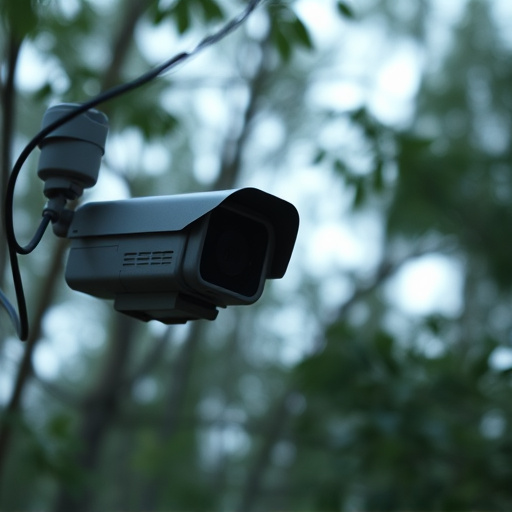In the digital era, convincing decoy cameras offer businesses an effective and covert security solution. While legal and ethical considerations must be navigated, strategic placement of these realistic-looking devices acts as a powerful deterrent against theft and vandalism. By integrating seamlessly with existing systems, they protect high-value assets in retail, offices, and commercial spaces. Regular maintenance ensures their effectiveness, blending into the environment while simulating active surveillance, thus fostering trust and enhancing overall security without compromising privacy rights.
In today’s digital age, covert recording plays a pivotal role in business security, offering both advantages and legal complexities. This comprehensive guide explores the art of identifying hidden recording spots using convincing decoy cameras. We delve into ethical considerations, the strategic placement of these devices, advanced techniques, and best practices to maintain their effectiveness. Discover how to fortify your business operations with subtle yet powerful surveillance solutions tailored for maximum impact.
- Understanding Covert Recording: Legal and Ethical Considerations
- The Role of Decoy Cameras in Business Security
- Choosing the Right Location for Hidden Cameras
- Advanced Spot Identification Techniques
- Best Practices for Maintaining Convincing Decoy Cameras
Understanding Covert Recording: Legal and Ethical Considerations
Understanding Covert Recording involves navigating a complex landscape of legal and ethical considerations. In many jurisdictions, covert or hidden recording is permitted under certain circumstances, but it’s crucial to know and adhere to these regulations to avoid potential consequences. The use of convincing decoy cameras for business purposes, such as surveillance, can be a sensitive topic. Companies must ensure that any recorded interactions comply with data protection laws and respect the privacy rights of individuals.
Ethical implications also come into play, particularly when recording conversations or activities without explicit consent. Businesses should implement robust policies to ensure transparency in their use of covert recording methods, especially if they involve employees or clients. Using convincing decoy cameras responsibly means balancing security needs with the right to privacy, ensuring fair practices that build trust rather than erode it.
The Role of Decoy Cameras in Business Security
In today’s digital era, businesses are increasingly turning to convincing decoy cameras as a robust security measure. These innovative devices play a pivotal role in deterring potential thieves and vandals by mimicking real surveillance equipment. Crafted with meticulous attention to detail, decoy cameras offer a cost-effective solution without compromising on visual quality or realism. They serve as a powerful psychological barrier, tricking wrongdoers into believing they’re under constant observation, thereby curbing illegal activities.
The strategic placement of these decoy cameras can significantly enhance overall business security. By integrating them into existing security systems, companies can create an illusion of advanced surveillance technology, effectively deterring criminals and promoting a safer environment. This layer of deception is particularly valuable for retail stores, offices, and other commercial spaces where high-value assets are vulnerable to theft or damage.
Choosing the Right Location for Hidden Cameras
When setting up hidden cameras, selecting the perfect location is paramount to achieving effective surveillance. A convincing decoy camera setup can be a powerful tool for businesses seeking to enhance security and deter potential threats. Strategically placing cameras in plain sight, such as within realistic-looking decoys like fake fire hydrants or streetlights, serves as a strong psychological deterrent. This method exploits the human tendency to trust what appears natural, making it less likely for criminals to suspect surveillance.
Consider factors like lighting, proximity to potential entry points, and the camera’s field of view. Well-lit areas are ideal, as they provide clearer footage and reduce image noise. Additionally, positioning cameras near visible access points, such as doors or windows, can serve as a visual warning while capturing potential intruders on tape. By combining convincing decoy cameras with judicious placement, businesses can create an environment that discourages unwanted activity without relying solely on the element of surprise.
Advanced Spot Identification Techniques
In today’s digital age, advanced spot identification techniques have emerged as indispensable tools for businesses seeking to safeguard their operations and protect intellectual property. One innovative method gaining traction is the strategic deployment of convincing decoy cameras. These sophisticated devices are meticulously designed to mimic everyday objects or infrastructure while secretly capturing high-resolution footage. Acting as subtle sentinels, they provide a layered security system that deters potential intruders and facilitates swift identification in the event of an incident.
Business owners can leverage this technology to monitor sensitive areas, such as manufacturing plants, data centers, or executive offices. The decoy cameras’ ability to blend into their surroundings makes them highly effective at gathering evidence without raising suspicions. This approach not only enhances overall security but also serves as a powerful deterrent against unauthorized access and potential theft or sabotage.
Best Practices for Maintaining Convincing Decoy Cameras
Maintaining convincing decoy cameras is paramount for businesses aiming to deter covert recordings in sensitive areas. To ensure their effectiveness, place them strategically, keeping in mind natural placement and regular maintenance. Cameras should appear authentic, with subtle design elements that blend into the environment—think realistic features, accurate lighting, and consistent positioning relative to actual security equipment nearby. Regular cleaning and adjustments will prevent them from looking outdated or neglected, enhancing their realism.
Consider routine testing to verify camera functionality and battery life. Periodically cycling through different settings and angles can also help maintain their appearance as active surveillance devices, making them a powerful tool in discouraging covert recording attempts while upholding ethical security practices.
In the realm of business security, employing convincing decoy cameras is a strategic move that can deter potential criminals. By understanding the legal and ethical implications of covert recording, selecting suitable locations, and mastering advanced spot identification techniques, businesses can enhance their safety measures. The right combination of technology and deception can create an effective deterrent, ensuring a safer working environment. When used responsibly, these methods offer a robust solution for safeguarding assets and employees alike.
